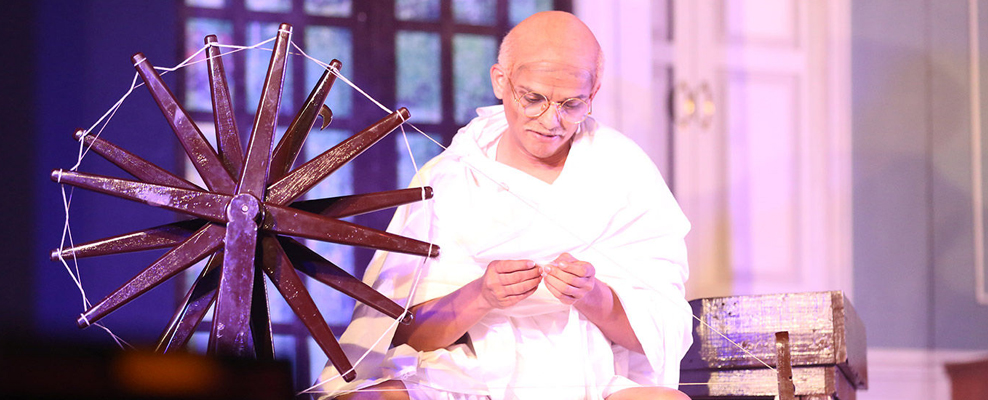
WoT's Hot
It was touted to be a must watch, having completed 309 shows across 90 cities and once the curtains fell, the build up to its acclaim started.
What exactly constitutes a ‘Yugpurush?’ A Yugpurush is someone who is considered to be an icon of his times. Now, we also know who the father of our nation is, but the play focuses on Gandhi’s relation with someone who becomes his friend, philosopher and guide and is considered to be the Mahatma of the Mahatma. In Gandhi’s own words, he is the person who has a strong influence in the journey of Mohan Das becoming The Mahatama. And this is the Yugpurush in question: a Gujarati businessman by the name of Shrimad Rajchandraji.
In his ‘Experiments with Truth,’ Gandhi dedicates an entire chapter to Shrimad Raychand bhai. The play is mostly based on facts that have been marginally tweaked to suit story telling.

It is when Gandhi returns from England as a young barrister in 1891, that he first meets Shrimadji in Bombay. They strike a bond and as Gandhi continues to meet him frequently, his respect for the gentleman continues to grow manifold. He witnesses incidents where his fair play and far sightedness are displayed and slowly but steadily, Gandhi also starts discussing deeper questions about life and dharma with him. He is never left disappointed by his answers. By the time Gandhi leaves for South Africa, their bond has deepened greatly and they keep up their correspondence through letters: 200 of them! His spiritual curiosity being stoked, Gandhi sends his spiritual guide, who he fondly refers to as Kavishri a barrage of questions on various aspects of life and promptly receives answers for each. It is in through these letters, that his fundamentals on non-violence, compassion, truth and dharma stand crystallized. In Gandhi’s own words, he states, “I have often declared that I have learnt much from others but it is from Kavishri’s life that I have learnt the most. It was from His life that I understood the way of compassion.”
The play juxtaposes an older Gandhi, recalling his times with Kavishri and a younger Gandhi, playing them out as it happened. There are several others characters who add to the story, such as other satyagrahis, merchants in Bombay and South Africa and of course, Kasturba Gandhi shown in her younger as well as briefly, in her older days. The limelight is reserved for the three actors playing the two Gandhis and Shrimad Rajchandraji himself.
The production of the play despite its length, keeps you captivated. Sound and light are well used to create great aura and mood. The multitude of props used includes everything from a tulsi plant to gaddis, Gandhi’s charkha and indeed an entire ship! One has to applaud the playwright Uttam Gada and the director, Rajesh Joshi for having presented the life and ideals of Shrimad Rajchandraji and opened it up to a larger audience as well as the indelible impact he had on the one whom we consider to be the Father of our Nation.
It was touted to be a must watch, having completed 309 shows across 90 cities and once the curtains fell, the build up to its acclaim started.
What exactly constitutes a ‘Yugpurush?’ A Yugpurush is someone who is considered to be an icon of his times. Now, we also know who the
Other Articles in KULTURY VULTURY WOT
What to read next
Featured articles

Welcome Festive Season in Glam, Latin Quarters Launches new #PujoBling Collection with Monami Ghosh
by WOT








































